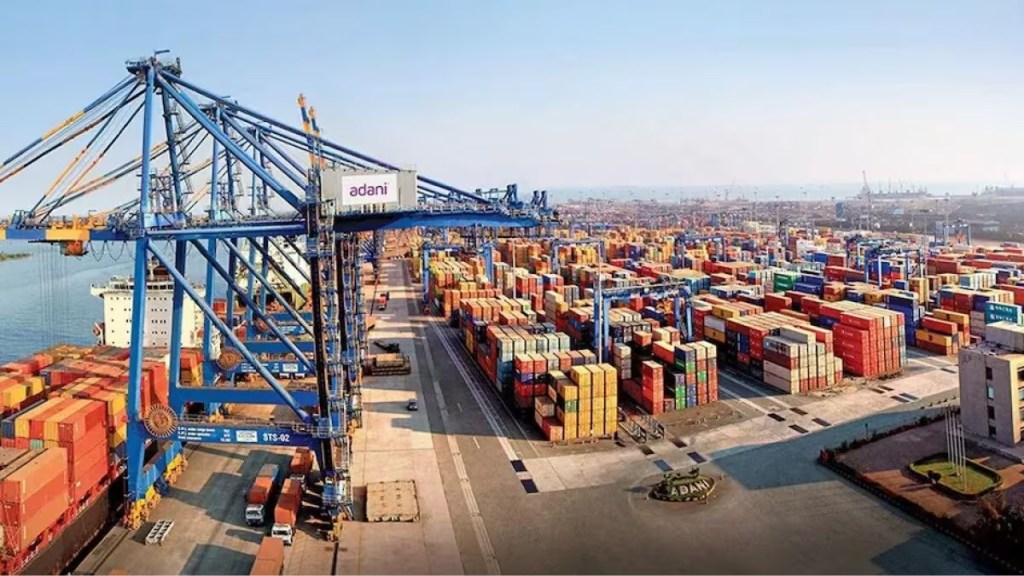By Dhanendra Kumar, Formerly executive director for India, Sri Lanka, Bangladesh and Bhutan at the World Bank and former chairman, Competition Commission of India. Currently, chairman, Competition Advisory Services LLP
From ancient times, maritime trade has played a key role in social and economic development and urbanization. The Harappan Era’s major ports (Lothal, Dholavira) handling maritime trade globally—evidence of items from Greece, West Asia, found in the remains—indicate the significance of ports. Today, more than 80% of global merchandise trade (by volume) is transported via the sea route. A considerable and increasing proportion is transported to ports in containers, which form essential part of global supply chains.
The efficiency of high-quality port infrastructure and logistics is a sine qua non for supporting manufacturing, competitiveness, exports, creation of employment, incomes and investments. Also, ports and terminals, particularly for containers, are often causes of shipment delays, supply chain disruptions, additional costs, and reduced competitiveness. As a result, instead of facilitating trade, inefficiency in ports increases the cost of imports and exports, slows turn-around, reduces competitiveness, inhibits economic growth and investors’ confidence.
Ports play a crucial role in economic development, but today they also play a critical role in geopolitical strategies. Ports connect the two geographical realms of land and sea as geographic sites with the dual roles of economic gateways and nodes of geostrategic projections. The role of ports as the linchpin in the global economy is a major reason why the World Bank and S&P Global Markets track port performance for nearly 350 global ports in the Container Ports Performance Index (CPPI).
The port power in a country that is dominant in eight metrics of port construction, management and control combining to make it both a major player in the seas, especially maritime transport and naval capability, and access to the landmass, helps it in acquiring dominance in several ways. The twenty-first century global geopolitical order will be determined by dominance in port power and China has been strategising to attain it.
The rapid rise of China’s economy has largely been resulted by decades of surging exports globally. With roughly 80% of global trade moving by sea, tapping into maritime shipping has been central to China’s strategy of export-led growth. Enhanced maritime connectivity has provided considerable economic benefits to Beijing with greater influence over the flow of goods worldwide.
To help its exports, China has developed some of the world’s largest and strategically important ports. According to the UNCTAD’s Liner Shipping Connectivity Index (LSCI), which scores countries and their respective container ports based on their level of integration into established liner shipping routes, several of China’s container ports rank quite high.
The developments in the past few months—the Israel-Hamas war and its possibility of snowballing into a larger regional conflict—have once again revealed the turbulence in geopolitics. Countries are trying to reinforce their strategic positioning through their own specific initiatives on all the three fronts—land, sea and the space/sky. Maintaining a lead over others is critical to safeguard its interests.
As India’s economic clout grows, our geopolitical interests will only be safeguarded through investments in strategic assets in friendly countries like Sri Lanka, Nepal, Bangladesh, and Maldives, among others. While geographical limitations constrain the benefits of mega land-based corridors or projects, maritime assets like ports and related areas offer crucial opportunity.
This is important for two reasons—India’s access to the Arabian Sea and the Bay of Bengal provides access to a broader region. Proximity to maritime routes helps secure energy supplies and maintain stability in the Indian Ocean. This can act as a counterweight to China’s global ambitions seeking to corner India.
India’s southern neighbour—Sri Lanka—has become the crucial playground for such regional superpowers to spread influence over this region. In a recent development that tilts the game in geostrategic architecture in the region in India’s favour, the US International Development Finance Corporation (DFC) in a first, is funding $553 million in CWIT (Colombo West International Terminal Pvt), a consortium involving India’s largest port operator Adani Ports and SEZ Ltd., and two Sri Lankan entities. The terminal will help growing economies in the Bay of Bengal, taking advantage of Sri Lanka’s pivotal position on major shipping routes and its prime proximity to these expanding markets.
Development Finance Corporation (DFC), the US government’s international development finance institution, invests across several sectors, including energy, healthcare, infrastructure, agriculture and small business and financial services. Significantly, this is the first time that it is funding such a project signaling its strong support to the private joint venture. Besides helping it gain momentum, this will strengthen India’s geo-strategic footprint in the region, in the context of Chinese shenanigans to gain hegemony in the region, besides an endorsement of the endeavors of the Indian private sector there.
